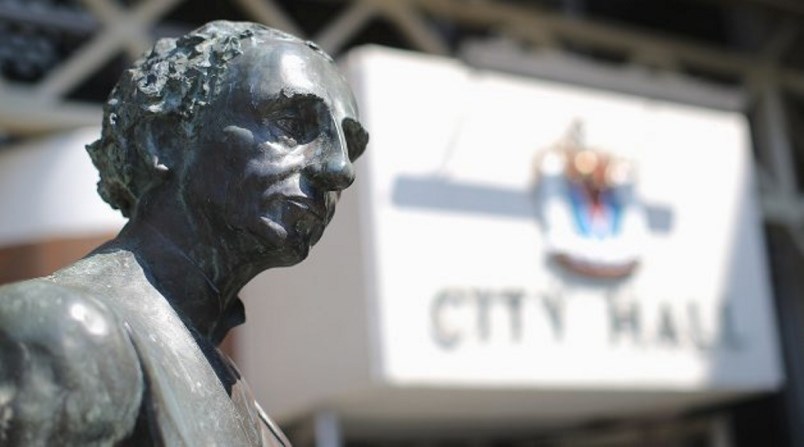The statue of Sir John A. Macdonald, removed from Victoria City Hall in August, should remain in public view — somewhere, say the majority of people in an Angus Reid poll.
The Angus Reid Institute polled 1,500 Canadians online Aug. 21 to 24 and found that 70 per cent said the name and image of Macdonald should remain in public view compared with 11 per cent who said his name and image should be removed. The remaining 19 per cent were undecided.
Angus Reid spokeswoman Shachi Kurl said between the removal of the statue and the proposal of a national holiday commemorating the legacy of residential schools, the divisive issue of removing statues of controversial historical figures or changing their plaques has dominated public discourse.
“The firmness of the pushback did stand out,” Kurl said.
“When you look at the issue broadly we really don’t see a mandate from the Canadian public saying ‘yes’ this is what we want — we are calling out for the removal of these statues.”
As Canada’s first prime minister and MP for Victoria from 1878 to 1882, Macdonald shaped a strong democracy but was also an architect of the residential schools system that removed Indigenous children from their families and sent them to church-run boarding schools where they lost their culture and language.
A Victoria city council committee, made up of Indigenous and non-Indigenous members, was appointed in June 2017 to address reconciliation efforts. It decided to remove the statue swiftly on the basis that it was a barrier to Indigenous people coming to city hall.
The matter was introduced on a city council agenda on Aug. 7, put before council for a vote and approved on Aug. 9, and the statue was removed at 5 a.m. on Aug. 11.
Victoria Mayor Lisa Helps has since apologized for limiting the public debate, but maintained that the removal was the right decision.
But according to Angus Reid pollsters, a majority of Canadians, 55 per cent, in every province except Quebec, disagree with the removal of the 635-kilogram bronze statue. Only 25 per cent agreed, and 20 per cent were unsure.
Janice Simcoe, director at the Centre for Indigenous Education and Community Connections at Camosun College who was a member of the city committee, told the Times Colonist that the mayor showed “extraordinary courage.”
The statue’s removal takes away a painful reminder for First Nations people of the man who oversaw the introduction of the residential schools system, and the action hurts no one, she said.
However, a majority of respondents to the Angus Reid survey are of the opinion that “remembering the trauma of residential schools should not come at the expense of memorializing the country’s first prime minister.”
Fifty-seven per cent said the country “spends too much time apologizing for residential schools” while 31 per cent said “the harm from residential schools continues and cannot be ignored.” The remaining 12 per cent were unsure.
The poll suggests the country is supportive of either a statutory holiday commemorating the legacy of residential schools, at 51 per cent, or a designated “day of remembrance” that is not a statutory holiday, at 53 per cent.
Helps has pledged to engage in broader consultations with the public as the city considers what to do with the statue, now in storage.
While a majority of Canadians would like to see the statue in a prominent public place, they are divided over whether it should be placed in a museum, at 44 per cent, restored to its original spot at city hall where it’s been since 1982, at 37 per cent, or displayed in another high profile public place, at 13 per cent.
The survey was commissioned and paid for by the Angus Reid Institute. It has a margin of error of plus or minus 2.5 percentage points, 19 times out of 20.
– Cindy E. Harnett, Times Colonist



